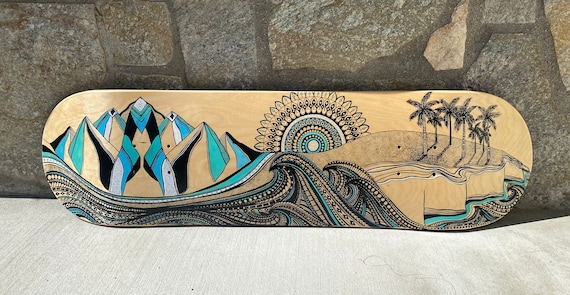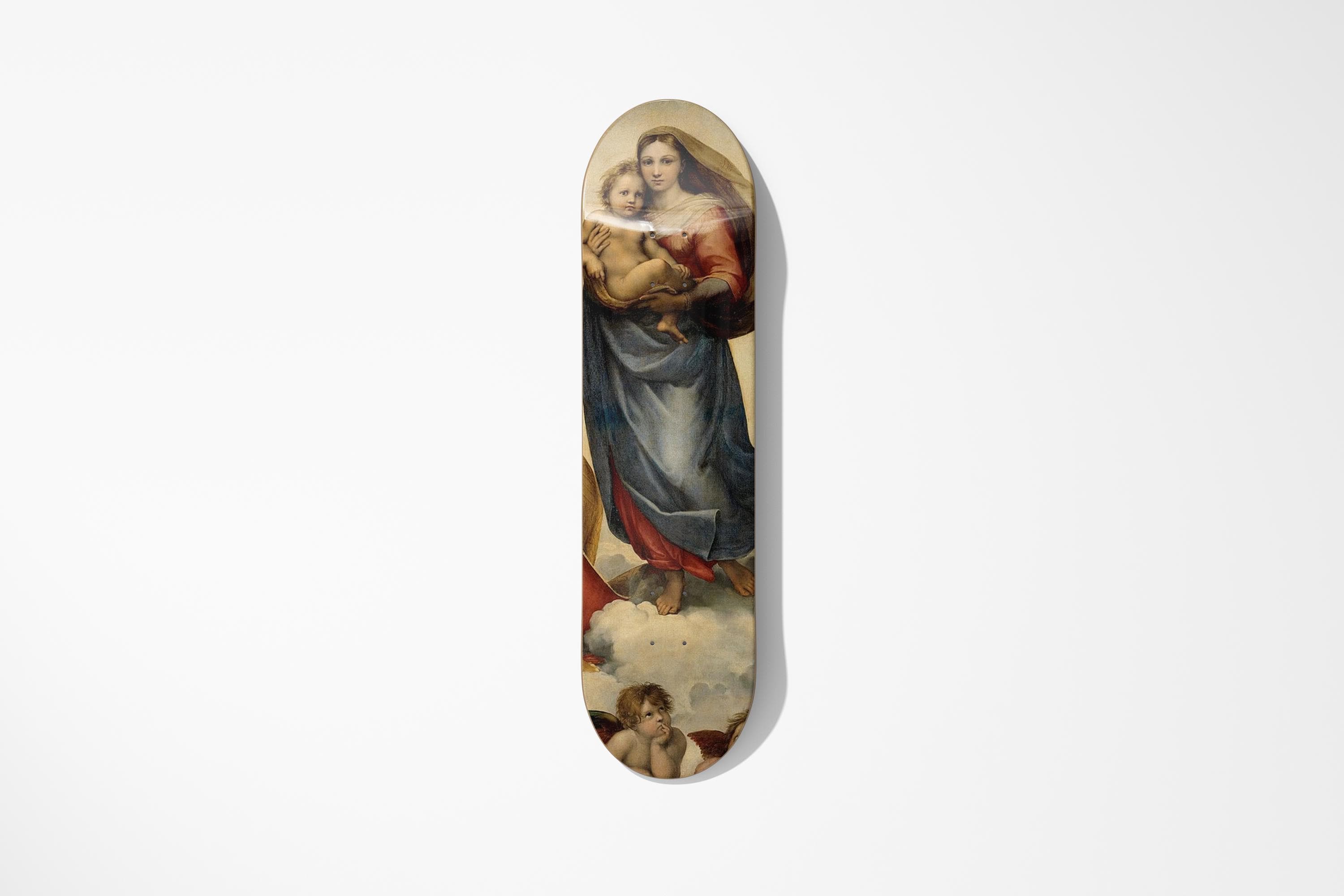Yesterday, my neighbor Klaus showed me his collection of 47 vintage skateboard decks mounted on his apartment wall like a museum exhibition. "It started with just one Bones Brigade deck from '87," he said, running his fingers along a pristine Tony Hawk board. "Now I can't walk past a skate shop without checking if they have something I don't." Watching his eyes light up as he described each piece, I realized I was witnessing something far deeper than simple materialism—I was seeing the fascinating psychology of collecting in action.
The Neuroscience of "Gotta Have It"
What drives someone to spend thousands of euros on skateboard art? The answer lies in our brain chemistry. Recent research from Scientific American reveals that dopamine, often called the "pleasure molecule," doesn't actually create pleasure—it creates desire. When we spot a rare classical art skateboard deck or a limited-edition piece, our brains release dopamine not when we own it, but when we anticipate owning it.
This finding is backed by BBC research on dopamine behavior, which shows that our brains have become "overstimulated by quick hits of dopamine from things like social media, technology and food." The same mechanism that makes us endlessly scroll Instagram makes Klaus feel excitement hunting for that elusive deck more than actually owning it.

Skateboard wall art collection showcasing classical art reproductions in horizontal display
This explains why Klaus felt more excitement hunting for that elusive deck than he did after hanging it on his wall. The anticipation—the "what if I find something amazing today?"—triggers our reward system more powerfully than the actual acquisition. It's like being permanently stuck in Christmas morning anticipation mode.
The Oddball Effect: Why Rare Pieces Drive Us Crazy
Psychology Today research on collecting behavior describes something called the "Oddball experiment"—when our brains encounter something unique among ordinary objects, specific pleasure centers activate. This neurological response explains why collectors go wild for one-off pieces or limited runs.
At DeckArts, we see this constantly. Our Bouguereau Amor & Psyche deck duo generates more inquiries than our more readily available pieces, not necessarily because it's more beautiful, but because it represents something rare in a sea of mass-produced boards.
The Seven Psychological Drivers of Skateboard Collecting
Through years of watching collectors in Berlin's skateboard art scene, I've identified seven core psychological motivations:
Pride in Aesthetic Curation: There's genuine satisfaction in assembling beautiful objects. When someone displays our Girl with a Pearl Earring deck duo alongside complementary pieces, they're not just showing off—they're demonstrating refined taste and curatorial skills.
Historical Connection: Many collectors feel linked to skateboard culture's history. Owning a piece with classical art creates a bridge between Renaissance masters and modern street culture. It's time travel through objects.
 Sistine Madonna skateboard deck art showcasing museum-quality Renaissance reproduction
Sistine Madonna skateboard deck art showcasing museum-quality Renaissance reproduction
The Hunt: Some collectors care more about finding pieces at great prices than owning expensive items. The intellectual challenge of spotting undervalued art feeds their analytical minds.
Social Networking: Collecting creates communities. I've watched strangers bond over shared appreciation for baroque art on skateboards, forming friendships that extend far beyond collecting.
Control and Organization: The act of arranging, cataloging, and displaying gives collectors a sense of mastery over their environment. In chaotic times, a well-organized collection provides psychological stability.
Legacy Building: Many collectors imagine passing their pieces to future generations, creating lasting impact beyond their own lives.
Anticipation Addiction: The most powerful driver is that dopamine hit from potentially finding something amazing. It's why Klaus still visits every skate shop he passes, even with 47 decks already on his walls.
When Collecting Becomes Compulsive
The same brain chemistry that makes collecting pleasurable can sometimes go too far. The Scientific American research I mentioned earlier studied patients taking dopamine-enhancing medications who developed compulsive behaviors—including compulsive collecting. Forbes research on dopamine dependency shows how "when someone habitually consumes addictive substances, the brain adapts by reducing its dopamine receptors."
The line between passionate collecting and problematic hoarding often comes down to whether the behavior enhances or detracts from other life areas. Healthy skateboard art collecting enriches your living space, connects you with like-minded people, and brings daily aesthetic pleasure. Problematic collecting isolates you, strains finances, or creates storage issues that interfere with daily life.
The Investment Psychology Factor
Let's be honest—part of collecting appeal is investment potential. When someone buys from our classical art collection, they're not just buying art; they're betting on skateboard art's growing cultural recognition. This adds an extra dopamine layer: the possibility of being "right" about an emerging market.
But here's what I've learned from successful collectors: the best investments are pieces you'd be happy owning even if they never increased in value. The art should speak to you first, investment potential second.
Digital Age Collecting Behaviors
Social media has fundamentally changed collecting psychology. Instagram and TikTok turn collections into content, adding social validation rewards to the traditional collecting dopamine hits. When Klaus posts his newest acquisition and gets 200+ likes, he's getting multiple reward types: the piece itself, social recognition, and content creation satisfaction.
This explains why aesthetically photogenic pieces often command premium prices. A stunning classical art skateboard photographs beautifully for social sharing, adding value beyond pure artistic merit.
The Completion Compulsion
Many collectors develop what psychologists call "completion compulsion"—the drive to finish sets or series. If someone owns three of our classical art pieces, they often feel motivated to "complete" a larger classical collection. This isn't just marketing psychology; it taps into fundamental human pattern-seeking behaviors.
The brain finds incomplete patterns psychologically uncomfortable, creating motivation to resolve the incompleteness. It's why collectors often describe feeling "almost done" with their collections, then immediately identifying new gaps to fill.
Cultural and Personal Identity Expression
Skateboard art collecting allows people to express complex identities simultaneously. Someone displaying classical Renaissance art on skateboard decks signals appreciation for fine art, skateboard culture, and contemporary design innovation. It's identity expression through curated objects.
This multi-layered identity signaling explains why skateboard art collectors often feel deep personal connections to their pieces. They're not just buying products; they're building visual representations of who they are and what they value.
The Future of Collecting Psychology
As VR and digital art expand, collecting psychology will evolve too. But I believe physical skateboard art will remain special because it engages multiple senses simultaneously. You can't feel the wood grain texture or see paint layer depth through a screen. There's something irreplaceable about physical presence that our brains will always crave.
Understanding collecting psychology doesn't diminish its magic—it enhances appreciation for these fundamental human drives. Whether you're drawn to classical Renaissance reproductions or contemporary street art, you're participating in behaviors that connect us to our deepest neurological reward systems.
The next time you feel that familiar pull toward a beautiful skateboard deck, remember: you're not just shopping. You're engaging with millions of years of evolved brain chemistry designed to help humans seek, appreciate, and preserve beauty. And honestly? That makes the whole experience even more meaningful.
For more insights into skateboard culture and art collecting, check out our guide to skateboard art authenticity and our exploration of AI and traditional craftsmanship.
About the Author
Stanislav Arnautov is the founder of DeckArts and a creative director originally from Ukraine, now based in Berlin. With extensive experience in branding, merchandise design, and vector graphics, Stanislav has worked with Ukrainian streetwear brands and organized art events for Red Bull Ukraine. His unique expertise combines classical art knowledge with modern design sensibilities, creating museum-quality skateboard art that bridges Renaissance masterpieces with contemporary culture. Follow him on Instagram, visit his personal website stasarnautov.com, or check out DeckArts on Instagram and explore the curated collection at DeckArts.com.

